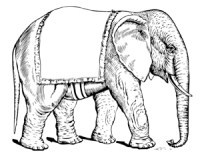The Bear Went Over the Mountain
Soviet Combat Tactics in Afghanistan
Translated and Edited by Lester W. Grau,
Foreign Military Studies Office, Fort Leavenworth, Kansas
Introduction by David M. Glantz, Former Director,
Foreign Military Studies Office, Fort Leavenworth, Kansas
Graphics and maps by Stephan K. Stewman and Martin E. Wiesiolek,
Foreign Military Studies Office, Fort Leavenworth, Kansas
Originally published by National Defense University Press, 1996
This edition published by Tales End Press, 2012
ISBN 978-1-62358-050-6
eBook Notes
The footnotes in this ebook edition have been moved to the end of each chapter, with links to and from the main text. The glossary, list of tactical map symbols and the overview maps of Afghanistan are very helpful when studying each of the tactical situations.
We love to get feedback and suggestions – just email [email protected], or leave a comment on our book blog at www.talesendpress.com

Contents
Foreword
Acknowledgements
Introduction
Preface
Frunze Comments
Frunze Foreword
Chapter 1: Blocking and Destroying Guerrilla Bands
1. An airborne battalion searches Sherkhankhel village
2. Searching a populated area in the Charikar Valley
3. Blocking and destroying a guerrilla band in Kunar Province
4. Combing the city of Bamian and its outlying towns during the course of a raid
5. Blocking and searching the green zone of the Arghandab River
6. Blocking, searching for and destroying a guerrilla force in Ishkamesh region
7. Sweeping a green zone in Helmand Province
8. Sweeping villages with Afghani and Soviet subunits
9. Sweeping a potential ambush area
10. Blocking, sweeping and destroying the
mujahideen
in the Varduj Valley.
11. Sequential blocking and sweeping of a mountain valley near Anushella
12. Blocking and sweeping an inhabited region
13. Blocking the enemy in an area of villages and then destroying them during the sweep
Chapter 2: The Offensive in Populated Areas and Mountains
14. Assault on the outskirts of Herat
15. The actions of a MRB as a raiding detachment
16. Assaulting Xadighar Canyon and seizing weapons and ammunition caches
17. An airborne battalion seizes the Satukandav Pass
18. Storming Spinakalacha village
19. A motorized rifle battalion offensive at night in the mountains of the Andarab Canyon
Chapter 3: The Application of Tactical Air Assaults
20. Tactical air assaults in Nangarhar and Laghman Provinces
21. An air assault in the area of Rumbasi village
22. Air-assaulting and blocking the enemy in the Lar-Mandikul’ Valley
23. Destruction of a guerrilla force by a tactical air assault into Lowgar Province
24. Seizing and holding a
mujahideen
training center with a tactical air assault
25. An airborne battalion lands in Islam-Dara Canyon and seals it off
26. Conducting a tactical air assault in the “Melava” fortified region
Chapter 4: Defense and Outpost Security
27. A motorized rifle platoon defends outside Jurm village
28. Organizing a security outpost in the suburbs of Kabul
29. Repelling a raid on a security post
30. A mobile security patrol in combat near the village of Chandaran
31. A mobile security patrol destroys a guerrilla force in Khinjan Canyon
32. Repelling a mujahideen attack on a security detachment in the Panjsher valley
33. Securing a base camp
34. LOC security
Chapter 5: March and Convoy Escort
35. Escorting a truck convoy from Kabul to Gazni
36. An air assault company escorts a convoy in Kunduz Province
37. Convoy escort and combat in the village of Daulatabad
38. Convoy escort and battle near Maliykhel’
Chapter 6: Conducting Ambushes
39. A reinforced MRC conducts an ambush in Kandahar Province
40. An airborne group ambushes a bridge site
41. A MRP conducts an ambush in the area of Aibak
42. A MRC conducts an ambush in the Loy-Karez region
43. An airborne platoon conducts an ambush in Helmand Province
44. A reinforced reconnaissance platoon conducts an ambush northwest of Surubi
45. Conducting ambushes on the basis of radio intercept data in the area of Khanabad
46. A reinforced motorized rifle company conducts an ambush to the northwest of Jalalabad
47. A recon platoon conducts an ambush in enemy-controlled territory
48. A reinforced recon company conducts an ambush west of Bagram
49. Conducting an ambush on the Yakpay Mountain Pass
Chapter 7: And in Conclusion
Glossary
About the authors
Map symbols
Maps of Afghanistan
Foreword
When the Soviet Union decided to invade Afghanistan, they evaluated their chances for success upon their experiences in East Germany, Hungary and Czechoslovakia. Unfortunately for their soldiers, as well as the people of Afghanistan, they ignored not only the experiences of the British in the same region, but also their own experience with the Basmachi resistance fighters in Central Asia from 1918–1933. Consequently, in Afghanistan the Soviet army found its tactics inadequate to meet the challenges posed by the difficult terrain and the highly motivated mujahideen freedom fighters.
To capture the lessons their tactical leaders learned in Afghanistan and to explain the change in tactics that followed, the Frunze Military Academy compiled this book for their command and general staff combat arms officers. The lessons are valuable not just for Russian officers, but for the tactical training of platoon, company and battalion leaders of any nation likely to engage in conflicts involving civil war, guerrilla forces and rough terrain. This is a book dealing with the starkest features of the unforgiving landscape of tactical combat: casualties and death, adaptation, and survival.